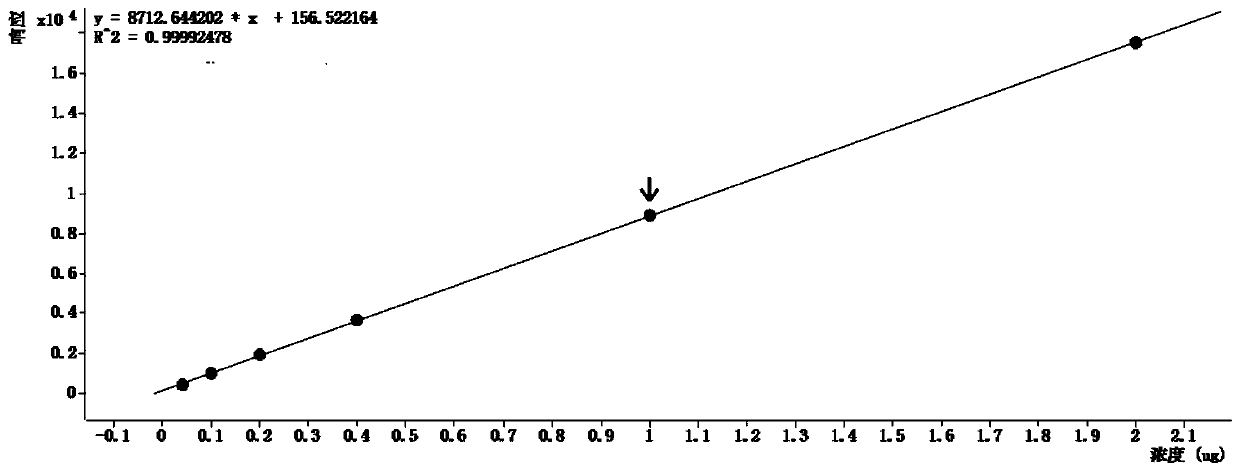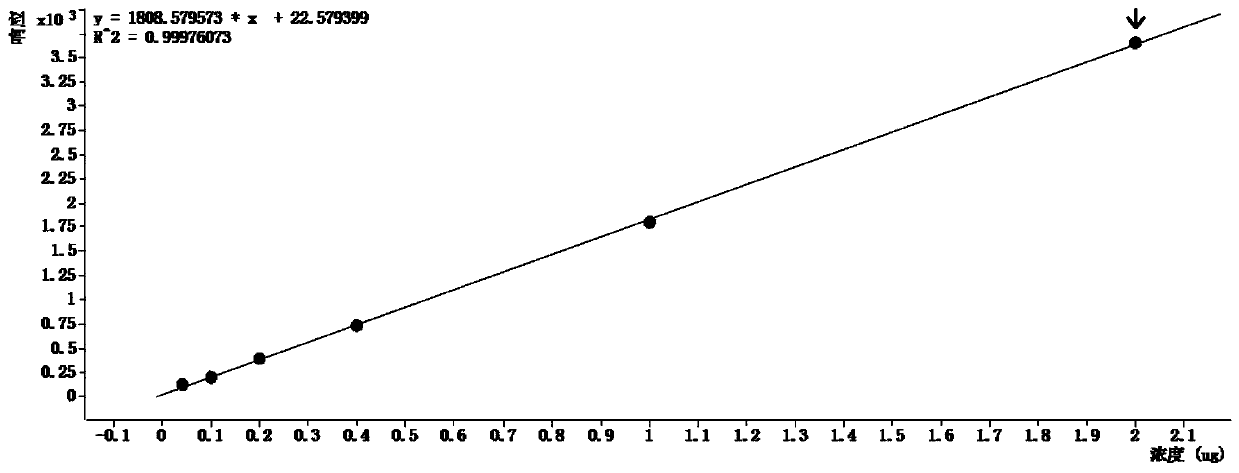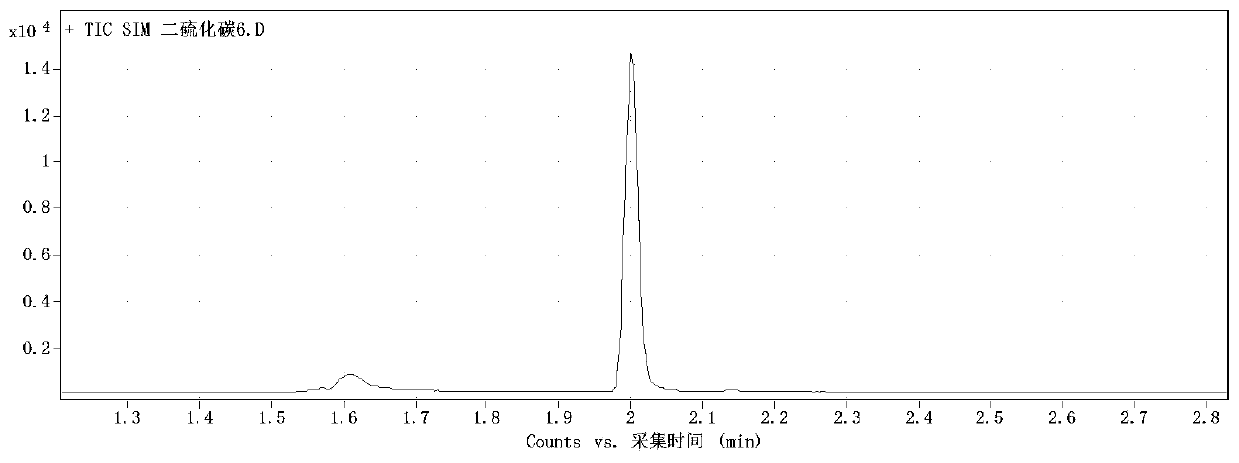Method for determining dithiocarbamate residues in tea leaves by means of headspace-gas chromatography-mass spectrometry
A dithioamino and gas chromatography technology is applied in the field of determination of dithiocarbamate residues in tea leaves by headspace-gas chromatography-mass spectrometry, which can solve the problem of large matrix interference, high detection cost, damage to automatic samplers, etc. question
- Summary
- Abstract
- Description
- Claims
- Application Information
AI Technical Summary
Problems solved by technology
Method used
Image
Examples
Embodiment 1
[0066] Prepare standard solutions:
[0067] Carbon disulfide standard solution: Weigh 0.0500g carbon disulfide (purity ≥ 99%) in a 50mL volumetric flask filled with a small amount of n-heptane, use n-heptane to make up volume, prepare a carbon disulfide solution with a concentration of 1.0000mg / mL, and use this solution with Dilute the intermediate standard solution with n-heptane to a concentration of 1 μg / mL, and then gradually dilute to a concentration of 0.01 μg / mL, 0.02 μg / mL, 0.04 μg / mL, 0.10 μg / mL, 0.20 μg / mL and 0.5 μg / mL Carbon disulfide standard solution, placed in a refrigerator at 4°C for standby;
[0068] Mancozeb standard solution: Weigh a certain amount of mancozeb into a volumetric flask, dilute to volume with 5% EDTA aqueous solution, prepare a dithiocarbamate intermediate standard solution with a concentration of 10 μg / mL, and then Diluted step by step to a concentration of 0.04μg / mL, 0.1μg / mL, 0.2μg / mL, 0.4μg / mL, 1.0μg / mL and 2.0μg / mL mancozeb standard solu...
Embodiment 2
[0115] Test the concentration (in carbon disulfide) of the dithiocarbamate in green tea according to the test method in embodiment 1, do not contain dithiocarbamate in green tea, test sample addition standard recovery and relative standard deviation, The results are shown in Table 1.
Embodiment 3
[0117] Test the concentration of the dithiocarbamate in Pu'er cooked tea according to the test method in Example 1 (calculated as carbon disulfide), do not contain dithiocarbamate in Pu'er cooked tea, and test sample addition recovery rate and the relative standard deviation, the results are shown in Table 1.
PUM
| Property | Measurement | Unit |
|---|---|---|
| Volume | aaaaa | aaaaa |
| Ionization energy | aaaaa | aaaaa |
Abstract
Description
Claims
Application Information
 Login to View More
Login to View More - R&D
- Intellectual Property
- Life Sciences
- Materials
- Tech Scout
- Unparalleled Data Quality
- Higher Quality Content
- 60% Fewer Hallucinations
Browse by: Latest US Patents, China's latest patents, Technical Efficacy Thesaurus, Application Domain, Technology Topic, Popular Technical Reports.
© 2025 PatSnap. All rights reserved.Legal|Privacy policy|Modern Slavery Act Transparency Statement|Sitemap|About US| Contact US: help@patsnap.com



